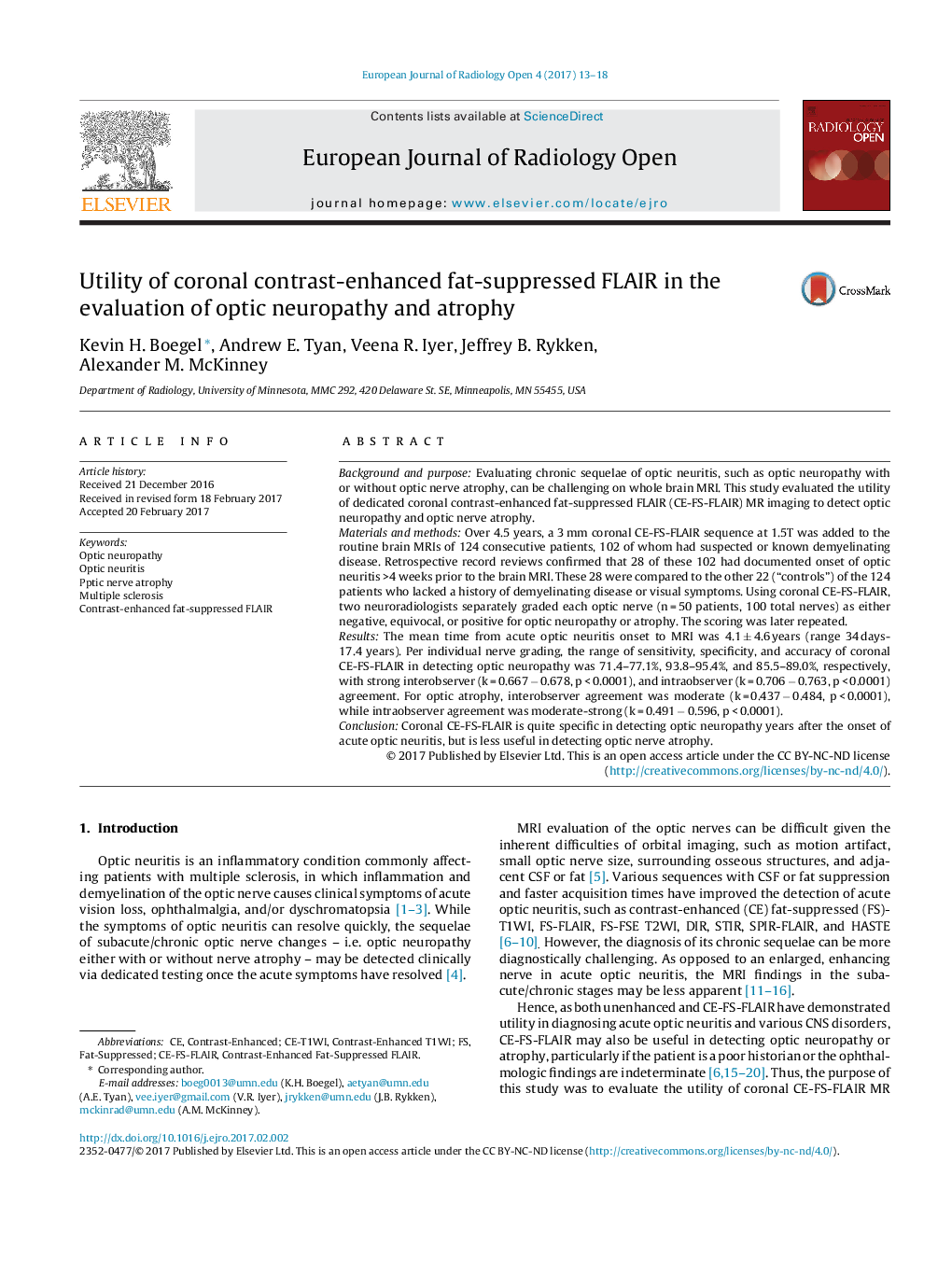| Article ID | Journal | Published Year | Pages | File Type |
|---|---|---|---|---|
| 5726426 | European Journal of Radiology Open | 2017 | 6 Pages |
Background and purposeEvaluating chronic sequelae of optic neuritis, such as optic neuropathy with or without optic nerve atrophy, can be challenging on whole brain MRI. This study evaluated the utility of dedicated coronal contrast-enhanced fat-suppressed FLAIR (CE-FS-FLAIR) MR imaging to detect optic neuropathy and optic nerve atrophy.Materials and methodsOver 4.5 years, a 3 mm coronal CE-FS-FLAIR sequence at 1.5T was added to the routine brain MRIs of 124 consecutive patients, 102 of whom had suspected or known demyelinating disease. Retrospective record reviews confirmed that 28 of these 102 had documented onset of optic neuritis >4 weeks prior to the brain MRI. These 28 were compared to the other 22 (“controls”) of the 124 patients who lacked a history of demyelinating disease or visual symptoms. Using coronal CE-FS-FLAIR, two neuroradiologists separately graded each optic nerve (n = 50 patients, 100 total nerves) as either negative, equivocal, or positive for optic neuropathy or atrophy. The scoring was later repeated.ResultsThe mean time from acute optic neuritis onset to MRI was 4.1 ± 4.6 years (range 34 days-17.4 years). Per individual nerve grading, the range of sensitivity, specificity, and accuracy of coronal CE-FS-FLAIR in detecting optic neuropathy was 71.4-77.1%, 93.8-95.4%, and 85.5-89.0%, respectively, with strong interobserver (k = 0.667 â 0.678, p < 0.0001), and intraobserver (k = 0.706 â 0.763, p < 0.0001) agreement. For optic atrophy, interobserver agreement was moderate (k = 0.437 â 0.484, p < 0.0001), while intraobserver agreement was moderate-strong (k = 0.491 â 0.596, p < 0.0001).ConclusionCoronal CE-FS-FLAIR is quite specific in detecting optic neuropathy years after the onset of acute optic neuritis, but is less useful in detecting optic nerve atrophy.
